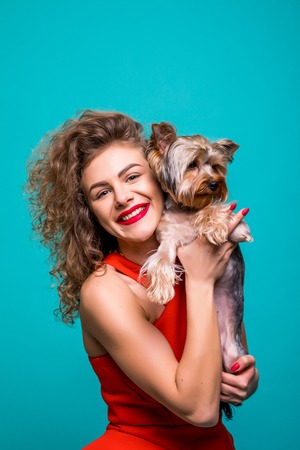Recognizing Different Types of Pet Wounds
When it comes to emergency wound care for your pet, the first step is being able to recognize the different types of wounds and understanding when urgent care is necessary. Pets can sustain a variety of injuries, ranging from minor scrapes to severe lacerations, punctures, or bite wounds. Common pet wounds include abrasions (surface scrapes), lacerations (deeper cuts), puncture wounds (often from bites or sharp objects), and avulsions (where skin or tissue is torn away). Each type has its own risks for bleeding and infection.
Its important to carefully observe any injury your pet sustains. Look for signs such as continuous bleeding, exposed tissue or bone, deep or gaping cuts, swelling, redness, discharge, or a foul odor—all indicators that immediate veterinary attention may be needed. Even seemingly minor wounds can become serious quickly if not managed properly. By learning how to identify different wounds and assessing their severity, you’ll be better equipped to provide prompt and effective first aid while seeking professional help when necessary.
Essential Emergency Supplies for At-Home Care
When it comes to emergency wound care for pets, having the right supplies on hand can make a life-saving difference. A well-prepared pet first aid kit ensures you’re ready to control bleeding, prevent infections, and provide comfort until you reach your veterinarian. Below is a list of must-have items and helpful tips for preparing a pet-friendly emergency wound care kit.
Must-Have First Aid Items for Pets
| Item | Purpose/Use |
|---|---|
| Non-stick sterile gauze pads | Cover wounds and absorb blood without sticking to fur or skin |
| Roller gauze or self-adhering bandage | Secure dressings and apply gentle pressure to control bleeding |
| Adhesive medical tape (pet-safe) | Hold gauze in place; avoid using human bandages directly on fur |
| Antiseptic wipes or solution (chlorhexidine or povidone-iodine) | Clean wounds and help prevent infection |
| Blunt-tip scissors | Safely cut bandages, tape, or fur around wounds |
| Tweezers (stainless steel) | Remove debris, splinters, or ticks from wounds |
| Cotton balls and swabs | Apply antiseptics or clean around the wound area gently |
| Muzzle or soft towel | Prevent biting if your pet is in pain during treatment |
| Disposable gloves (latex-free) | Maintain hygiene and protect both you and your pet from infection |
| Emergency contact card (vet info & poison control) | Quick access to essential phone numbers in a crisis situation |
| Saline solution (sterile) | Irrigate and flush wounds safely before dressing them |
| Pain relief prescribed by your vet (never use human meds) | Provide comfort only with veterinary guidance; never administer human medication unless directed by a vet |
| Towel or blanket | Help restrain your pet gently or keep them warm after an injury |
| Flashlight with extra batteries | Aid visibility when examining wounds, especially at night or in dark areas of the home or outdoors |
Tips for Preparing Your Pet-Friendly Wound Care Kit
- Select Pet-Safe Products: Always choose products specifically labeled as safe for animals—some human medications and adhesives can be toxic to pets.
- Keep Your Kit Accessible: Store your kit in an easy-to-reach location known to all household members, but out of reach of children and pets.
- Check Expiry Dates: Regularly review the contents of your kit to replace any expired items or used-up supplies.
- Add Personal Touches: Include familiar-smelling cloths or treats to help calm your pet during emergencies.
- Create a Travel Kit: Prepare a compact version of your kit for road trips, hikes, or visits to parks—accidents can happen anywhere!
Your Next Steps in Pet Emergency Preparedness
A thoughtfully assembled pet first aid kit provides peace of mind and ensures you’re ready to act quickly in case of injury. By keeping these essential supplies on hand and updating your kit regularly, you’ll be equipped to help control bleeding, reduce the risk of infection, and support your pet’s comfort until professional veterinary care is available.
![]()
3. Step-by-Step Guide to Controlling Bleeding
When your pet experiences a bleeding wound, acting quickly and calmly is crucial. Follow these clear, easy-to-follow steps to safely control bleeding until you can reach your veterinarian:
Step 1: Stay Calm and Keep Your Pet Safe
Your pet may be scared or in pain. Approach slowly, speak gently, and use a muzzle if needed for safety—injured pets may bite out of fear.
Step 2: Assess the Wound
Identify the location and severity of the bleeding. If possible, trim away fur around the wound with blunt scissors to get a better look, but avoid causing further injury.
Step 3: Apply Direct Pressure
Use a clean cloth, sterile gauze pad, or even a clean towel. Place it firmly over the wound and press with steady, gentle pressure for several minutes without peeking. This helps form a clot and slow down bleeding.
If Bleeding Continues
Add more layers on top of the first cloth or gauze without removing what’s already there. Continue applying pressure. Do not use tourniquets unless absolutely necessary and only if trained—improper use can cause serious harm.
Step 4: Elevate the Wounded Area (If Possible)
If the wound is on a leg or paw, gently elevate it above your pet’s heart level while maintaining pressure. This helps slow blood flow to the area.
Step 5: Secure a Temporary Bandage
Once bleeding slows or stops, wrap the wound snugly with gauze and secure it with medical tape or self-adhesive wrap. Ensure it is firm enough to hold but not so tight that it cuts off circulation—check toes for swelling or coolness.
Step 6: Seek Veterinary Care Immediately
Even minor wounds can become serious if not properly treated. Once bleeding is under control, transport your pet to your veterinarian or an emergency clinic as soon as possible for professional care and infection prevention.
Remember:
Never use human medications or ointments unless directed by your vet. Always keep a basic pet first aid kit on hand at home or during travel for emergencies like this.
4. Proper Wound Cleaning Techniques
When your pet suffers a wound, proper cleaning is essential to minimize the risk of infection and promote healing. The right approach depends on the type and severity of the injury. Below are step-by-step instructions for cleaning different types of wounds using supplies that are safe for both pets and households.
Supplies You’ll Need
| Supply | Purpose | Pet-Safe Alternatives |
|---|---|---|
| Clean water or saline solution | Rinsing debris and bacteria | Bottled saline wound wash or boiled, cooled water |
| Gauze pads or clean cloths | Cleaning and drying the wound | Sterile gauze, non-linting towels |
| Mild soap (unscented, no antibacterial additives) | Cleansing area around the wound | Baby shampoo or gentle dish soap diluted in water |
| Tweezers (sterilized) | Removing visible debris like grass or glass splinters | Metal tweezers cleaned with rubbing alcohol |
| Antiseptic solution (pet-safe) | Killing surface bacteria after cleaning | Povidone-iodine or chlorhexidine diluted as directed by vet |
Instructions for Cleaning Different Types of Wounds
Abrasions & Superficial Scrapes
- Gently flush the wound with clean water or a pet-safe saline solution to remove dirt and debris.
- If needed, use a soft gauze pad soaked in saline to wipe away remaining particles without scrubbing.
- Dab the area dry with a clean towel—do not rub.
- Apply a thin layer of diluted antiseptic recommended by your veterinarian.
- If possible, keep your pet from licking the area until it dries.
Puncture Wounds (e.g., bites, thorns)
- Irrigate the puncture site thoroughly with saline solution to flush out bacteria deep within the wound channel.
- Avoid probing deeply; instead, let gravity help drain fluids by gently pressing around the site if your pet tolerates it.
- Puncture wounds carry a high risk for infection—after initial care, always contact your vet promptly for further treatment.
- If there’s visible debris, carefully remove it with sterilized tweezers only if easily accessible.
- Dab surrounding skin with diluted antiseptic but avoid pushing liquid into the puncture hole itself.
Lacerations & Cuts
- Rinse with clean water or saline to clear away blood and dirt.
- If bleeding continues after rinsing, apply gentle pressure using sterile gauze until it stops before proceeding with cleaning.
- Wash around the cut with mild soap and water but avoid getting soap inside the wound itself.
- Pat dry with a clean cloth, then apply a pet-safe antiseptic around the edges.
- If edges gape widely, bandaging may be needed—see your vet for stitches if necessary.
Important Tips for Safe Wound Care at Home
- Avoid using hydrogen peroxide or alcohol: These can damage healthy tissue and slow healing in pets.
- Never use human antibiotic ointments unless directed by your veterinarian: Some ingredients may be toxic if licked off by pets.
- If you notice swelling, pus, increased pain, or fever: Seek veterinary attention immediately as these are signs of infection.
Your Pet’s Comfort Matters!
If your pet becomes stressed or agitated during cleaning, pause and try again later—or seek help from another adult. Always reward calm behavior after wound care sessions to help reduce anxiety in future emergencies. With gentle handling and proper technique, you can play a crucial role in keeping your furry friend safe while awaiting professional medical attention when needed.
5. Signs of Infection and When to Seek Veterinary Help
Recognizing the Warning Signs of Infection
After you’ve provided emergency wound care for your pet, it’s important to monitor the injury closely for signs of infection. Even minor wounds can become serious if bacteria invade the tissue. Watch for key warning signs such as redness that spreads beyond the wound, swelling, heat around the area, or increased pain when touching the site. You may also notice discharge that is yellow, green, or foul-smelling, which usually indicates pus or an abscess. If your pet starts licking or chewing at the wound more than usual, this can also be a sign of discomfort and possible infection.
Behavioral and Systemic Clues
Changes in your pet’s behavior can signal trouble. Lethargy, loss of appetite, shivering, or fever (warm ears or nose) are all red flags that the infection may be affecting their whole body. Sometimes pets will limp or avoid using a limb if a leg wound becomes infected. It’s important to trust your instincts—if your pet just isn’t acting like themselves after an injury, don’t ignore it.
When Professional Veterinary Care Is Needed
If you notice any of these warning signs—or if the wound doesn’t seem to be healing within a few days—it’s time to contact your veterinarian. Deep wounds, puncture injuries (such as from animal bites), wounds with foreign objects embedded, or injuries near sensitive areas like eyes and joints always require professional attention. Don’t attempt to treat severe bleeding, large wounds, or exposed bone at home; get emergency help immediately. Early intervention by a veterinary professional can prevent complications and ensure your pet heals safely and comfortably.
6. Preventing Future Injuries and Promoting Healing at Home
Creating a Safe Environment for Your Pet
After your pet has experienced a wound, it’s essential to make some changes at home to reduce the risk of future injuries. Start by examining your living space for common hazards—sharp objects, exposed wires, toxic plants, or small items that could be chewed or swallowed. If you have multiple pets, supervise their interactions, especially if one is recovering from an injury. Consider using baby gates or pet barriers to limit access to certain rooms or areas with slippery floors.
Supporting Your Pet’s Recovery
Follow Your Veterinarian’s Instructions
Carefully follow all care instructions from your veterinarian regarding medications, wound cleaning, and activity restrictions. Use prescribed antibiotics or pain relief as directed to minimize infection risks and keep your pet comfortable.
Monitor the Healing Process
Check your pet’s wound daily for signs of infection such as redness, swelling, discharge, or a foul odor. If you notice any of these symptoms or if your pet appears to be in pain, contact your vet right away. Keeping a journal of your observations can be helpful during follow-up visits.
Encourage Rest and Limit Activity
Physical rest is crucial for healing. Prevent your pet from running, jumping, or playing roughly until cleared by your veterinarian. Short leash walks and quiet time indoors will help them recover faster while reducing the risk of reopening the wound.
Create a Comfortable Recovery Space
Set up a cozy area with clean bedding in a quiet part of your home where your pet can relax undisturbed. Make sure food and water are easily accessible without requiring too much movement. For pets prone to licking or chewing wounds, consider using an Elizabethan collar (cone) or a soft recovery collar as recommended by your vet.
Promote Positive Reinforcement
Praise and reward calm behavior during wound care and medication administration. This will help reduce stress for both you and your pet, making home care easier and more successful.
Stay Vigilant for Ongoing Safety
As your pet heals, gradually reintroduce normal activities under supervision. Continue to keep hazardous items out of reach and regularly inspect play areas for new risks. By staying proactive about safety and providing attentive home care, you’ll help ensure a smooth recovery and prevent future emergencies.


